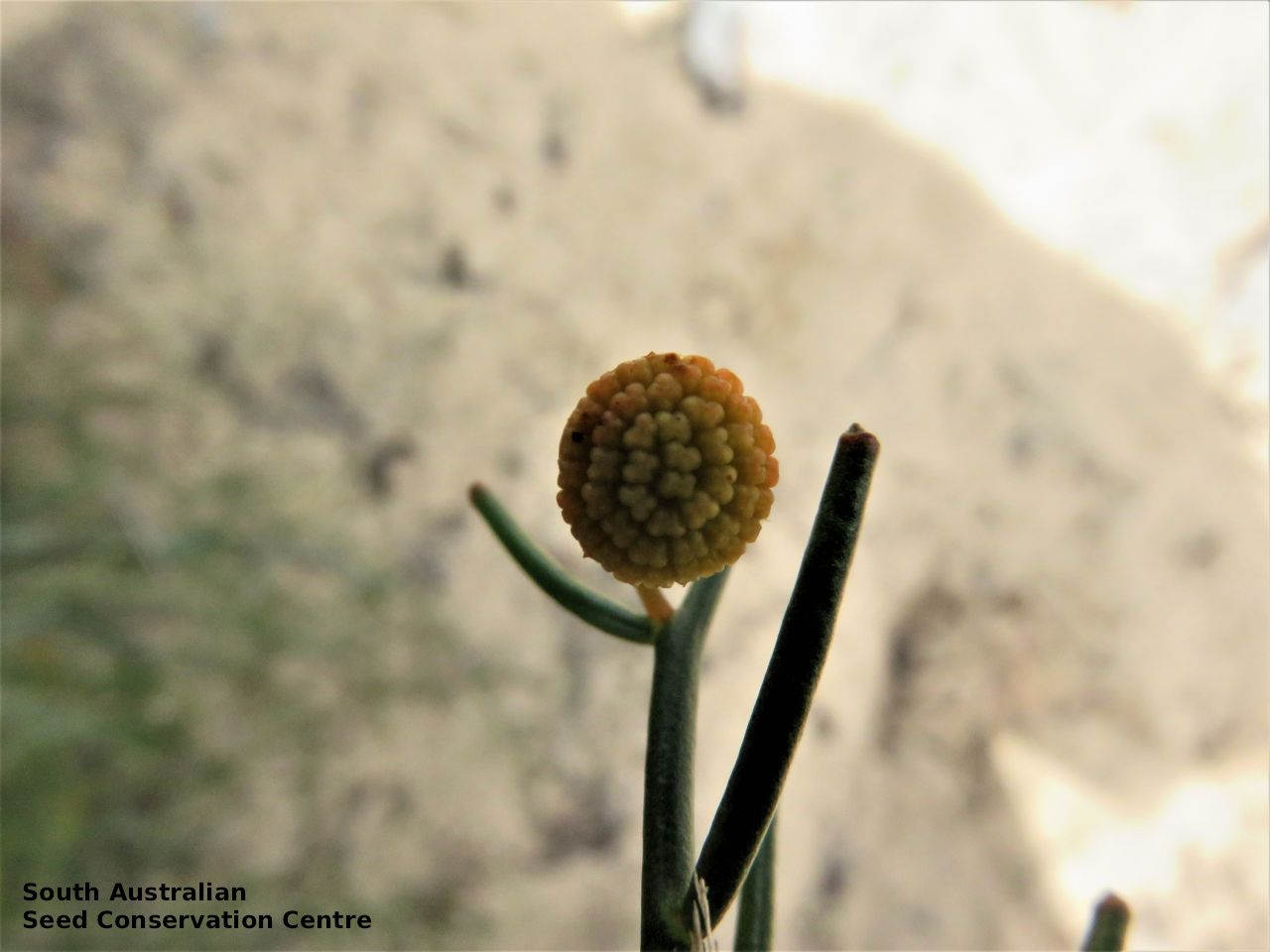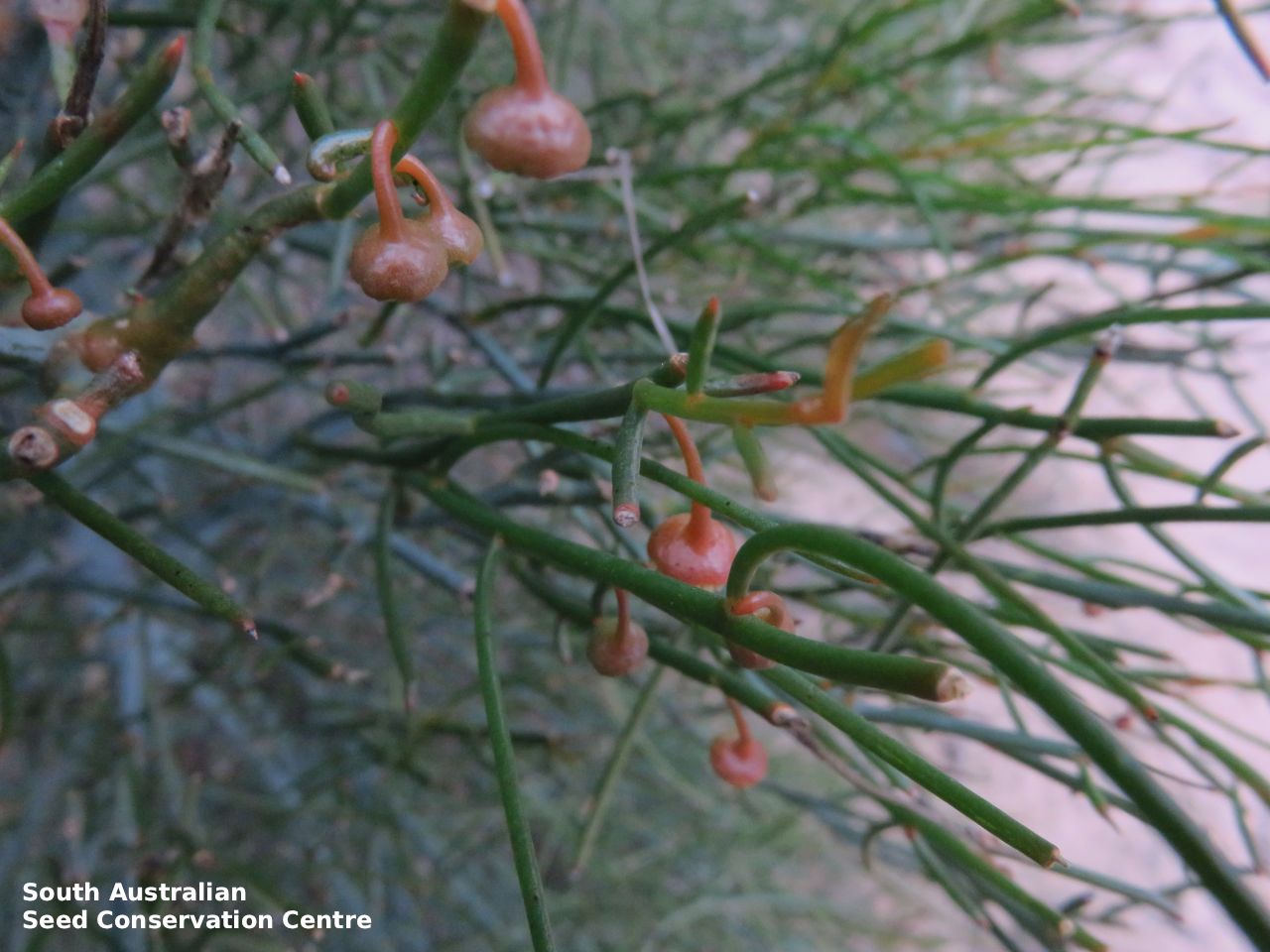













Botanical art
Common names
Chinese Bush
Bushy Wheel-fruit
Etymology
Gyrostemon from the Greek 'gyros' meaning a circle and 'stemon' meaning a stamen, alluding to the whorled stamens. Ramulosus from the Latin 'ramulus' meaning many small branches or twigs, referring to the branching habit of the species.
Distribution and status
Found mainly in the western half of South Australia with an isolated distribution in the far north-east corner; growing on sand, in sandy rises and desert dunes. Also found in Western Australia, Northern Territory and Queensland. Native. Common in South Australia. Rare in Queensland. Common in the other States. More common post fire.
Herbarium regions: North Western, Lake Eyre, Nullarbor, Gairdner-Torrens, Flinders Ranges, Eyre Peninsula
AVH map: SA distribution map (external link)
Plant description
Shrubs or trees to 5 m tall, with corky bark on the old branches. Leaves slender, to 70 mm long and 1 mm wide; pointed, terete, soft. Male flowers with recurved pedicels to 5 mm long and 5 mm across at anthesis, with the calyx distinctly lobed and the lobes acute, with numerous anthers in several whorls. Female flowers with recurved pedicels to 7 mm long, with the calyx distinctly lobed and the lobes being acute or obtuse, with usually 20-30 carpels each with a sessile stigma, spreading to form a crown above the ring of ovaries. Flowering between May and September. Fruits are pale brown spherical fruit to 6 mm long formed from multiple seed segments. Seeds are grey-brown reniform seeds to 2.4 mm long and 1.8 mm wide, with a rugose surface and a yellowish aril. Seed embryo type is curved linear fully developed.
Seed collection and propagation
Collect seeds between August and December. Collect fruits when the segments are about to fall apart, usually when colour changes to pale brown. Place the fruits in a tray and leave to dry for a week. Then rub the fruit gently by hand to dislodge the seeds from the papery wing. Use a sieve to separate the unwanted material. Store the seeds with a desiccant such as dried silica beads or dry rice, in an air tight container in a cool and dry place. This species is generally difficult to germinate, it has morpho-physiological dormancy and complex germination requirements. This species is considered a fire responsive species.